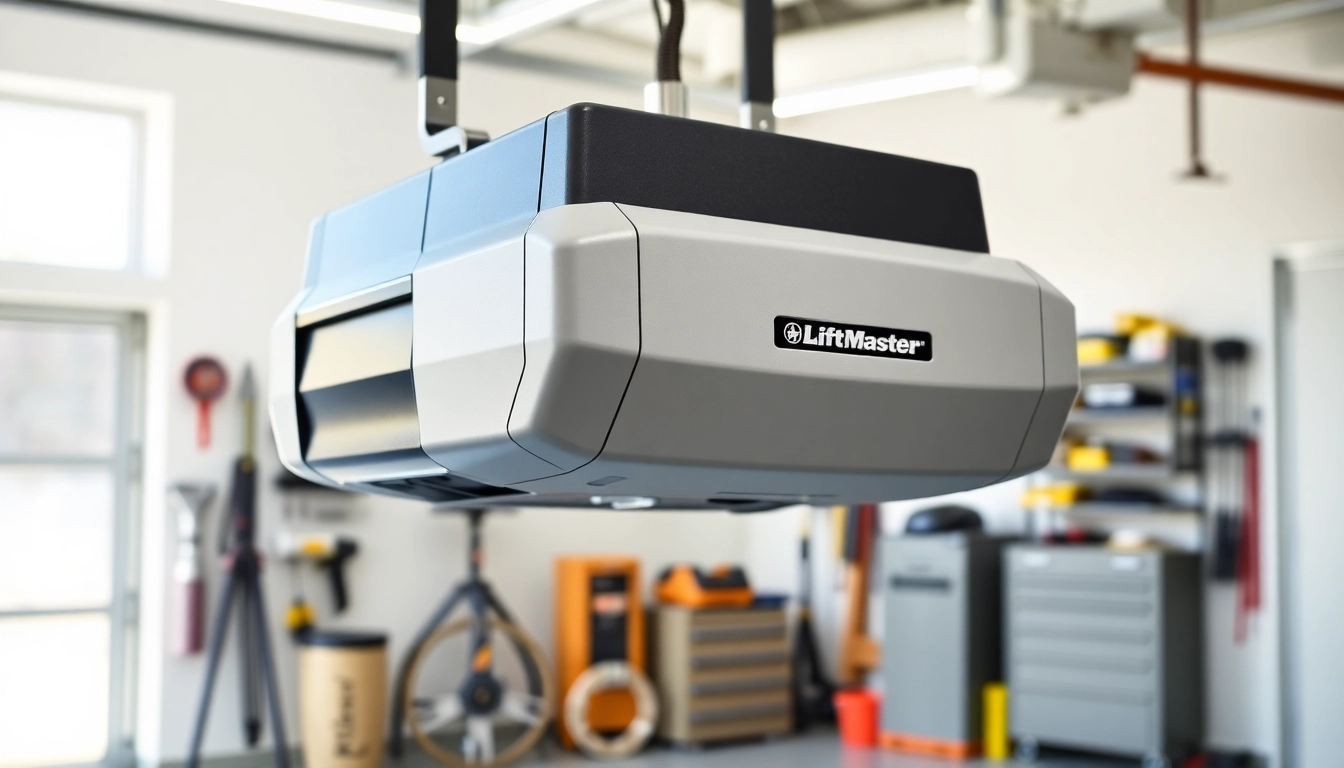Understanding Off Grid Solar Systems
What is an Off Grid Solar System?
An off grid solar system is a standalone solar energy system that allows users to produce and utilize their own electricity without being connected to the traditional power grid. This type of system is particularly beneficial for remote locations where grid access is limited or nonexistent. Essentially, an off grid solar system operates independently, generating, storing, and utilizing energy from the sun. By harnessing renewable solar energy, these systems empower individuals to achieve energy independence, reduce reliance on fossil fuels, and contribute to a more sustainable future. Those looking to explore off grid options can find various solutions highlighted in this comprehensive guide to the off grid solar system.
Benefits of Off Grid Solar Systems
Off grid solar systems present numerous advantages that cater to both environmental concerns and the practical needs of users. One significant benefit is energy independence. Users are not vulnerable to the fluctuations in energy prices or service interruptions common with grid systems. Additionally, they can reduce their carbon footprint by relying on clean, renewable energy sources instead of fossil fuels.
Moreover, off grid solar systems can provide significant cost savings. Although initial installation costs might be higher, over time, users can save on electricity bills and maintenance costs. In remote areas, the cost of extending power lines can be exorbitantly high; a solar system often provides a more economical solution.
Further, off grid systems can enhance resilience against environmental disasters. In areas prone to hurricanes, wildfires, or other natural disasters, having an independent power source ensures continuous energy supply, making them indispensable for off-grid living.
Key Components of Off Grid Solar Systems
To successfully function independently from the grid, an off grid solar system comprises several vital components:
- Solar Panels: These are the primary energy producers, converting sunlight into electricity.
- Charge Controller: This device regulates the voltage and current coming from the solar panels, preventing overcharging of the batteries.
- Batteries: Essential for storing energy produced during the day for use at night or during periods of low sunlight.
- Inverter: Converts DC (direct current) electricity from the solar panels or batteries into AC (alternating current), which is used by most household appliances.
- Backup Generator: Optional but useful for providing additional power during extended periods of poor sunlight.
Evaluating Your Energy Needs
Calculating Energy Consumption
Before diving into installation, it’s crucial to evaluate your energy needs meticulously. Begin by listing all appliances that will be powered by your off grid solar system, noting their wattage and usage duration. For example, a refrigerator may use around 150 watts, and if it runs for 24 hours, the total energy consumption would be:
150 watts x 24 hours = 3600 watt-hours (Wh) or 3.6 kilowatt-hours (kWh). With your total energy consumption calculated, tracking usage over time can provide insight into actual needs versus calculated estimates.
Assessing Location and Sunlight Exposure
To optimize the efficiency of your off grid solar system, assess your geographical location and the amount of sunlight your site receives throughout the year. Factors like shading from trees or nearby buildings can significantly impact solar panel performance. Utilizing tools like solar pathfinders or simple sun charts can help determine optimal panel placement.
Additionally, local weather patterns, such as cloudy days and rainy seasons, should be factored into your energy planning to ensure you account for energy production variability throughout the year.
Choosing the Right System Size
With your energy consumption calculated and sunlight data assessed, determining the right size of your off grid solar system is the next step. A larger system might be able to support more appliances and devices while providing a buffer against energy shortages during less sunny periods. When sizing your system, consider the following:
- Daily Energy Needs: This is the total energy consumption identified earlier.
- Battery Storage Capacity: Ensure your battery bank can accommodate about 1.5 times your daily energy needs for optimal performance.
- Solar Panel Output: Calculate how many panels you will need by considering each panel’s wattage in relation to your daily energy requirements and average daily sunlight hours.
Installation Process for Off Grid Solar Systems
Preparing Your Site for Installation
Site preparation is crucial for a successful off grid solar system installation. The first step involves selecting the appropriate location for solar panel installation. South-facing slopes typically receive the most sunlight. Clear the site of debris and obstructions, ensuring the area is free from overhanging branches or buildings that could block sunlight.
Next, consider the foundation on which your solar panels will be mounted. This can range from ground mounts to rooftop installations, depending on your specific situation. Ensure that the mounting system is sturdy and appropriately anchored to withstand local weather conditions.
Step-by-Step Installation Guide
Following site preparation, the installation process typically consists of the following steps:
- Install Solar Panels: Secure the solar panels according to the manufacturer’s instructions, ensuring they’re oriented towards the sun.
- Set Up Charge Controllers: Attach the charge controller to manage the voltage and current from the solar panels to the batteries.
- Connect Batteries: Wire the batteries to ensure they are connected safely and appropriately for energy storage.
- Install the Inverter: Connect the inverter to the batteries and to your home’s electrical system to convert stored energy into usable power.
- Test the System: After installation, conduct a thorough test to ensure all components are functioning correctly, and ensure proper safety protocols are in place.
Common Mistakes to Avoid
Installation can be complicated, but avoiding common pitfalls can lead to a successful setup. Here are some frequent mistakes:
- Not Considering Future Needs: Many users size their systems to current needs without considering anticipated future growth in energy consumption.
- Ignoring Local Regulations: Be aware of building codes and regulations in your area regarding solar installations; non-compliance can lead to complications.
- Underestimating Maintenance Needs: Ensuring that panels are clean and free of debris is crucial for optimal performance, yet often overlooked.
Maintenance and Service of Off Grid Solar Systems
Regular Maintenance Checklist
To enhance the longevity and efficiency of your off grid solar system, adhere to a regular maintenance checklist. Recommended tasks include:
- Inspect Solar Panels: Check for dirt, debris, or shading that can obstruct sunlight. Clean panels periodically to maximize efficiency.
- Monitor Battery Health: Regularly check battery water levels, terminals, and overall performance. Replace batteries as needed based on manufacturer guidance.
- Test System Performance: Assess energy generation periodically to ensure the system meets expected output metrics.
Identifying and Troubleshooting Common Issues
Understanding potential issues can help prevent major system failures. Common problems may include:
- Inadequate Power Generation: Caused by shading, dirt on panels, or malfunctioning equipment. Regular inspections can identify these issues quickly.
- Battery Drainage: An unexpected drain on battery life can indicate faulty connections or excessive energy consumption. Monitoring systems are beneficial in pinpointing these problems.
- Inverter Failures: Inverters can fail due to overheating or electrical issues. Maintaining proper ventilation and cooling is crucial.
Maximizing System Lifespan
Prolonging the lifespan of your off grid solar system involves proactive strategies:
- Regular Cleaning: Clean solar panels routinely to ensure maximum sunlight absorption and efficiency.
- Scheduled Inspections: Conduct professional inspections at least annually to detect and address potential issues before they escalate.
- Battery Management: Implement best practices for battery maintenance, including not allowing batteries to discharge fully and checking for electrolyte levels when applicable.
Future Trends in Off Grid Solar Technology
Innovations in Solar Panel Design
The solar energy landscape continues to evolve with advancements in technology. Innovations such as bifacial solar panels, which collect energy on both sides, and solar shingles that integrate seamlessly into roofing, are gaining popularity. These advancements not only improve energy efficiency but also aesthetics, making solar applications more appealing to a broader audience.
Integration with Smart Home Technology
As the demand for smart technology rises, integrating off grid systems with smart home devices enhances overall functionality. Homeowners can manage energy consumption through applications that connect to their solar systems, allowing for real-time monitoring and control over energy usage patterns.
Potential Regulations and Incentives
As off grid solar systems gain traction, governmental regulations and incentives are likely to evolve. Many regions offer rebates, tax credits, or grants to encourage renewable energy adoption. Staying informed about local regulations can provide savings and facilitate a smoother installation and operational process.




